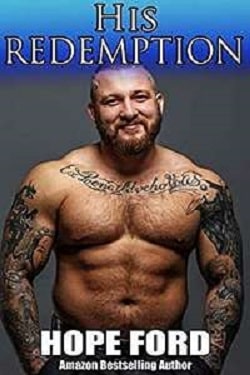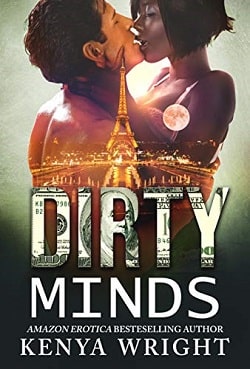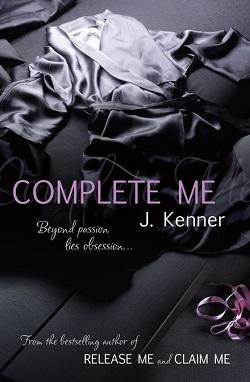If the fourth grade at Wiley School was the most miserable year of my childhood, I think I would have to choose 1974 as the most painful year of my adult life. I was working on The Master Puppeteer when I was sent to the hospital to see about a suspicious lump that turned out to be a malignancy. It is obvious that I survived my bout with cancer. In the years since I have enjoyed remarkably good health, but in 1974 I didn’t know what the future would be or if I had one to look forward to. Now, children are often afraid of death, and I certainly was as a child. But I was forty-one years old now with four young children, and it was not only the dread of dying, but the idea of leaving my children behind that I could not bear to imagine. I knew my lovely husband would be fine. There would be women lining up around the block to snatch him the moment I was out of the picture. One of them might even turn out to be a better mother than I was. But, surely, no one, I thought, no one, however fit to replace me, could ever love those children the way I did.
The puppeteer in the center was my chief resource in writing The Master Puppeteer
Of course, my death would not leave my children alone. They had a loving father and grandparents and aunts and uncles and a whole congregation of people who would care for them. Lin and John were not only brother and sister, but the closest of friends. Mary had a wonderful teacher, with a daughter just Mary’s age who looked out for her while I was in the hospital and, would, I knew, continue to care for her. And David had Lisa.
Lisa had come into our lives the previous autumn. The small school that our children attended was closed and all the students were moved to a much larger elementary school across town. David, our second grader, was miserable. In the little school he was both the class artist and the c
lass clown. In his new school he was simply weird. Every day he came home and declared that he was “never, never going back to school and you can’t make me.” And I, his mother, who had been in fifteen different schools by the time I was eighteen and had been initially despised at nearly every one, was over-identifying with my seven-year-old, probably exacerbating his misery, but, nevertheless getting him up every morning and grimly pushing him out the door, fearing that his unhappiness would never end.
Then one afternoon, our bright funny little boy that I thought was gone forever came running into the house. “Me and Lisa Hill are making a diorama of Little House in the Big Woods,” he announced cheerily. I had never heard the name before, but from then on I was to hear hardly any other name. “Now, I’d like to promise you girls,” I say when I’m talking to children, “that I was thrilled that my son’s best friend was a girl. But unfortunately, all I could think was ‘They thought he was weird before. If his best friend is a girl, he’ll never fit in.’”
But then I met Lisa, and my worries evaporated. Anyone would be fortunate to have her for a best friend. She was bright, imaginative, and funny. She laughed at his jokes and he at hers. She was the only girl daring enough to invade the second-grade boys’ T-ball team. She and David played together after school in the woods below her house and talked to each other in the evenings on the phone.
“It’s your girlfriend, David,” his older brother would say.
But David would take the phone unperturbed. Girlfriends are people who chase you down on the playground to grab you and kiss you. Lisa was no more a “girlfriend” than Margaret Thatcher was a Playboy Bunny.
Then on an August morning, the phone rang. It was a call from the Hills’ next-door neighbor. “I thought you ought to know,” Mrs. Robinson said, “that Lisa was killed this morning.” While the family was on vacation at Bethany Beach, on a day when the lifeguards sensed no danger from thunder far off in the distance, a joyful little girl, dancing on a rock above the crowded beach, was felled by a bolt of lightning from the sky.
How was I to make sense of this tragedy for my child? I couldn’t make sense of it for myself. So, eventually, I began to write a story, because I knew that a story has to make sense. It has a beginning, a middle, and an end, and when you get to the end, even if you cannot articulate intellectually what has happened, you know emotionally that you have come from chaos to order. In Thus Spoke Zarathustra, Nietzche says: “One must have chaos within to give birth to a dancing star.” And somehow, as dark as life itself sometimes seems, at the end of a well-told story, the dancing star will shed light on the chaos.
So I began to write what I could not understand or explain, but when I came to the place in my story when I knew that if I went to work the next day I would write the chapter in which Leslie Burke would die, I did the only thing I could do to keep her alive, I didn’t go to work. I caught up on my mail, I rearranged my bookshelves, I think I was even reduced to scrubbing the kitchen floor—anything to keep from writing the fatal chapter.
It was just then that I happened to have lunch with a former Richmond classmate. “How’s your new book coming?” she asked. Now, no one, as the long-suffering members of my immediate family know all too well, no one is ever supposed to ask me how my work is coming, but Estelle had known me longer than any of them, and she had no respect. So I blurted out an answer. “I’m trying to write a book about a friendship between a boy and a girl in which the girl dies,” I said. “But I can’t let her die. I guess,” I added, thinking I was very wise, “I guess I can’t face going through Lisa’s death again.”
Estelle looked me straight in the eye. “I don’t think it’s Lisa’s death you can’t face,” she said. “I think it’s yours.”
I knew she was right. If it were Lisa’s death I couldn’t face, it was one thing, but if it were my death I couldn’t face, then I would have to finish the book. I went home that afternoon, and with sweat pouring down my arms, wrote the chapter and in a few days finished the draft. It was the most painful writing I had ever done—so painful I simply couldn’t stand having it in the house, so I did what no real writer would ever do, I mailed the draft to Virginia Buckley before the sweat had evaporated.
As soon as I mailed the manuscript, I knew that I had made a terrible mistake. Every day I expected the letter that would tell me politely, maybe even a little sorrowfully, that I had obviously lost whatever talent I had shown up until then—that my career as a writer was over. Instead I got a phone call. It was Virginia, saying that she wanted to talk to me about my new manuscript. I stopped breathing.
“I laughed through the first two-thirds,” she said, “and cried through the last.” I began to breathe again. “Now,” she continued, “let’s turn it into a book.”
And then she did what I believe the great editors do; she asked me the question that would do just that. “Is this,” she asked, “a story about friendship or is it a story about death?”
Until that moment, I had thought I was writing a story about death. Hadn’t it been a year of death in our lives? But as soon as she asked the question, I knew I was wrong. “Oh,” I said, “it’s a story about friendship.” “Then you need to go back and write it that way.” She went on to remind me that in any true friendship both friends change and grow because they know each other. “I see how Jesse has changed because he has known Leslie, but I don’t see how knowing Jesse has changed Leslie. How has Jesse made a difference in her life?”
That was the problem that had to be solved to turn my pitiful little cry of anguish into a real story. And as I pondered it, up from the dust of the playground at Calvin H. Wiley School arose Pansy and her two gigantic cohorts who had bullied me when I was a fourth grader. It would be Pansy alias Janice Avery who would show how Jesse’s friendship enriched Leslie’s life.
I revised Bridge to Terabithia extensively and it was published. It was and is a simple story, told in only 128 pages, and the first edition, as I recall, was a modest seven thousand copies. At the time, I wondered if anyone who was not named Paterson would understand it at all. I am still astounded by the response to the book, more than thirty-five years later. But here I want to tell you what it taught me as a writer who was so afraid of mediocrity that she almost didn’t dare to become a writer at all.
As children, as adolescents, and even, I fear, as adults, most of us are afraid that if we reveal ourselves as we really are to one another, we will be despised. In writing Bridge to Terabithia, I went into the deepest, darkest regions of myself and offered it to my readers, and my readers, through the years, have given the deepest parts of their own souls to my book and together we have created, across barriers of age and race and religion and nationality—even across language barriers—a deep human connection, which in a world torn apart by divisions seems miraculous to me.
At a conference once, a woman said, “I think it’s wonderful how open you are.” I was quite startled. “You don’t understand,” I said, “writers are very private people . . . who run around naked in public.” So when I think of writing, I really think first of the trip inward. What is it that I care so deeply and passionately about that I want to share it with that wonderful person, my reader? Am I willing to run around naked in public—to lay bare my own mind and heart and spirit to share this passion? Can I forget who might not approve or who might want me to go in a different direction? Am I determined to be as plainly honest as I can be in telling this story?
But of course there is another step—my early drafts of Bridge to Terabithia were simply a cry of pain from the depths. They were not yet a story—the chaos within must be brought into the light of day and be shaped by all the art at our disposal before it will speak a coherent word to another person, much less become a dancing star.
Perhaps the story I’m going to tell next belongs in the chapter I have called “Motherhood (Less than Ideal),” because the seed of The Great Gilly Hopkins certainly grew out of that thorny ground.
It began in the spring of 1975. I was recovering physically and writing Bridge to Terabithia, while on the other side of the world all hell had broken loose. South Vietnam fell and then Cambodia. My children were watching the dreadful news on television and were upset by scenes of the children who were victims of the disasters. They had been nagging me for another brother or sister since Mary got out of diapers, so now they were begging me to adopt some of these homeless children. And I was saying, “I can’t take care of more than four children. We can’t afford any more children.” We compromised. We wouldn’t adopt any more, but we would provide temporary foster care for any child that came to the Washington area if asked. Since Lutheran Social Service had certified John and me as genuine okay parents when we adopted Mary, I offered them our services. We were asked to take in two Cambodian boys for two weeks while the immigration authorities figured out what to do with a planeload of Cambodian children that had arrived at Dulles Airport with no identification other than name tags hanging around their necks.
That seemed manageable to me. We bought bunk beds for the boys’ room, and I started cooking rice three times a day, thinking how lucky these boys were to land in the home of a woman who knew how to cook rice properly. Needless to say, it wasn’t as easy as cooking rice as the two weeks stretched into two more weeks an
d two more and yet more. The honeymoon period when all six children were behaving was quickly over. I learned a lot about children, about being a foster parent, and especially about myself that, given the choice, I’d just as soon not have learned. Up until then I had thought of myself as a B– or at least C+ mother, and now as a foster mother I was flunking.
I had to ask myself why, and I found my answer in my own mind. When I met each of our four children, either in the delivery room or at the airport, I knew this child was mine—that there was no backing out for either of us. For better or worse, in sickness and in health, we would belong to each other as parent and child as long as we both lived.
This sort of conviction does something to a relationship, and both you and the child know it. When problems arise, there is no escape, so you try to work them out. But with these boys, I would find myself thinking, I can’t really deal with that. They’ll be here such a short time. Or, Thank heavens they’ll soon be gone. What I was doing was treating two human beings as though they were disposable. That’s why crimes are committed. That’s why wars are fought. Because someone thinks someone else is disposable.















